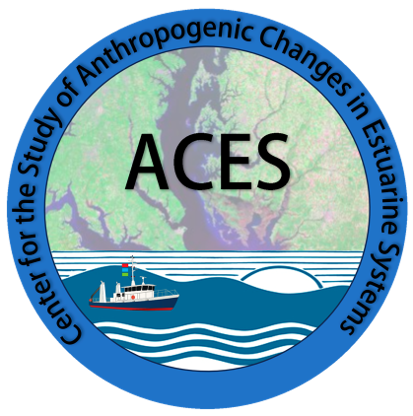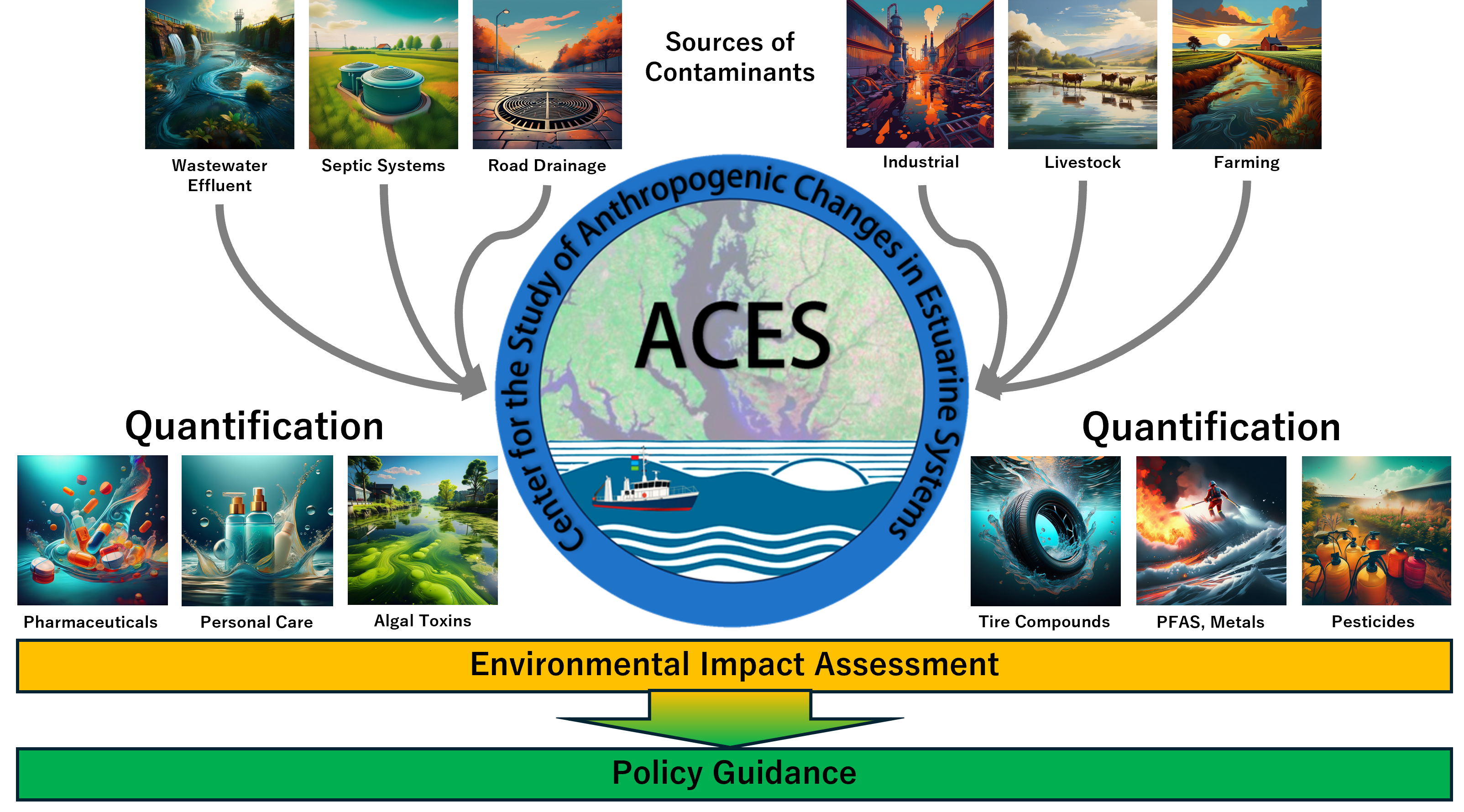
Recognizing the laboratory’s long-standing tradition of working on chemicals of environmental concern, the newly established Center for Anthropogenic Changes in Estuarine Systems (ACES) supports the development of analytical methods to help UMCES scientists identify harmful contaminants in waterways and assess their risk to environmental and human health.
Vision
The new ACES Center is transformative for UMCES’ scientist and student research. The center aids UMCES mission to support the state and local governments in addressing our understanding of emerging contaminants of concern in aquatic systems, develop solutions and to elevate our message to the world stage.

Instrumentation
New instruments available at ACES include the Waters Xevo G3 Qtof and the Xevo TQ Absolute mass spectrometry systems. It also includes LC/MS-MS, GC-MS and other systems.
Analytical capabilities
We have a number of methods to detect many chemical contaminants in environmental matrices (water, sediment, biota). Examples include, PFOS/PFOA, various UV filters (sunscreen active ingredients), septic/wastewater tracers (sucralose, caffeine, acetaminophen, carbamazepine), tire compounds (6-PPDQ, tri-di-phenylguanidine).
Please inquire for further capabilities.
Point of Contact
Professor Michael Gonsior – gonsior@umces.edu
Research Professor Andrew Heyes – heyes@umces.edu
Professor Carys Mitchelmore – mitchelmore@umces.edu
This Center was made possible thanks to a kind donation from Brian Hochheimer and Marjorie Wax.

